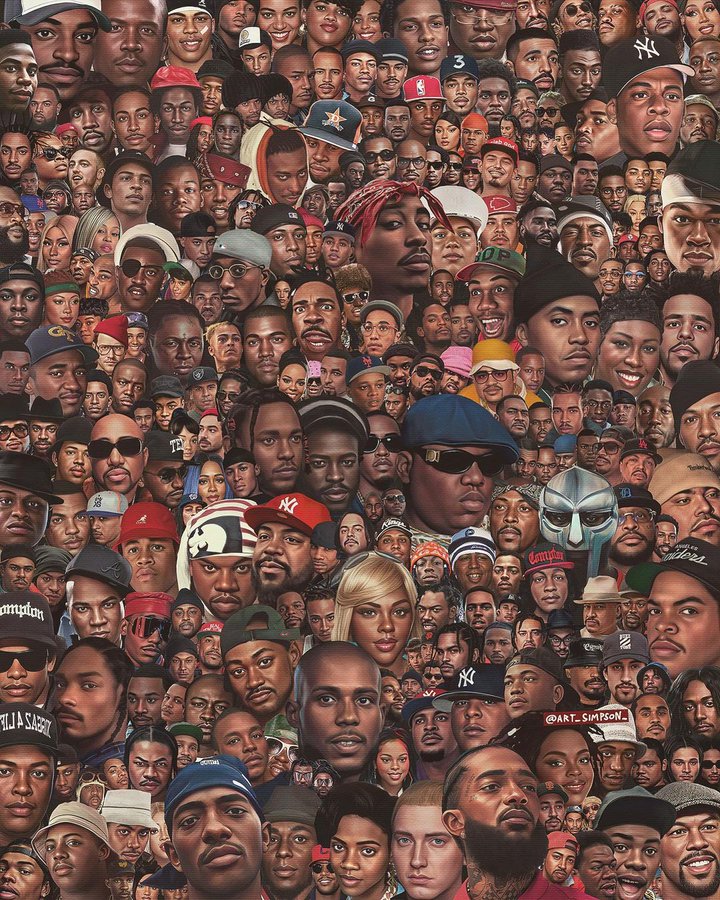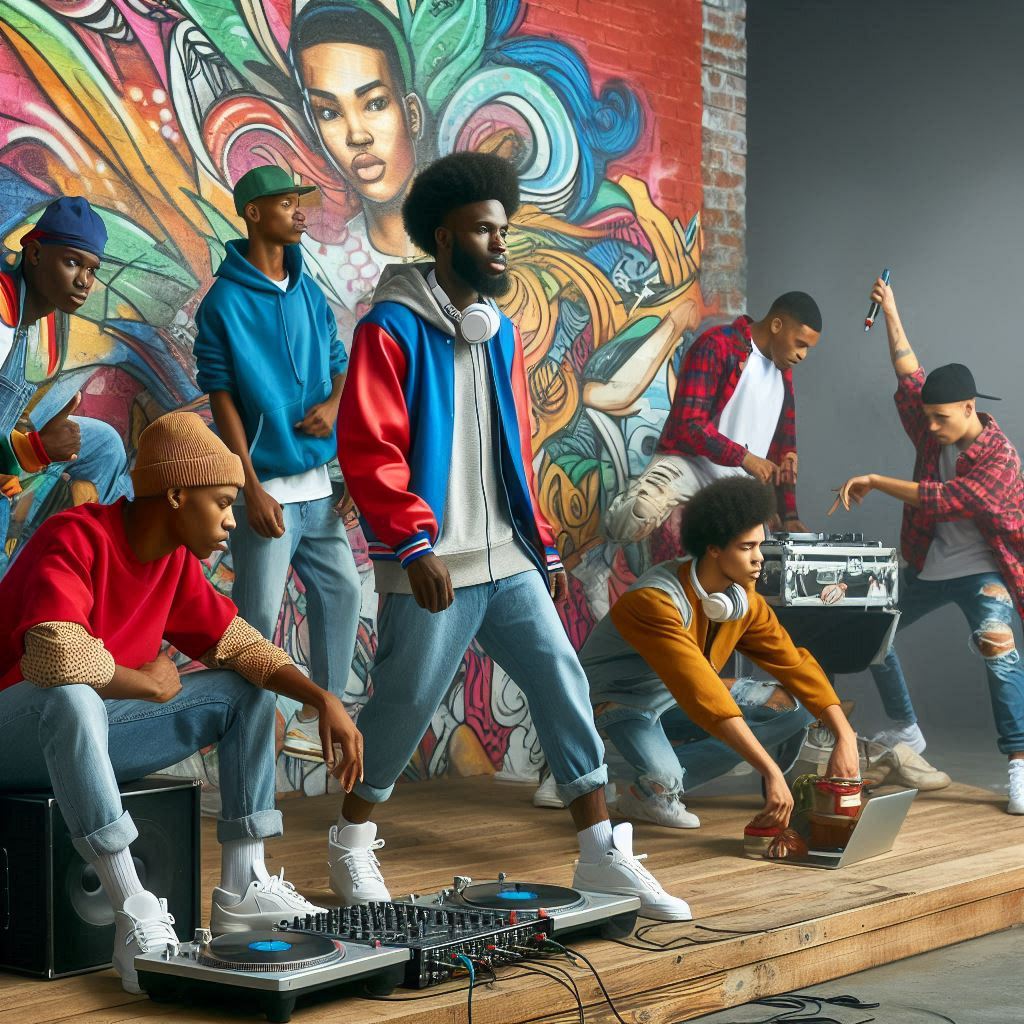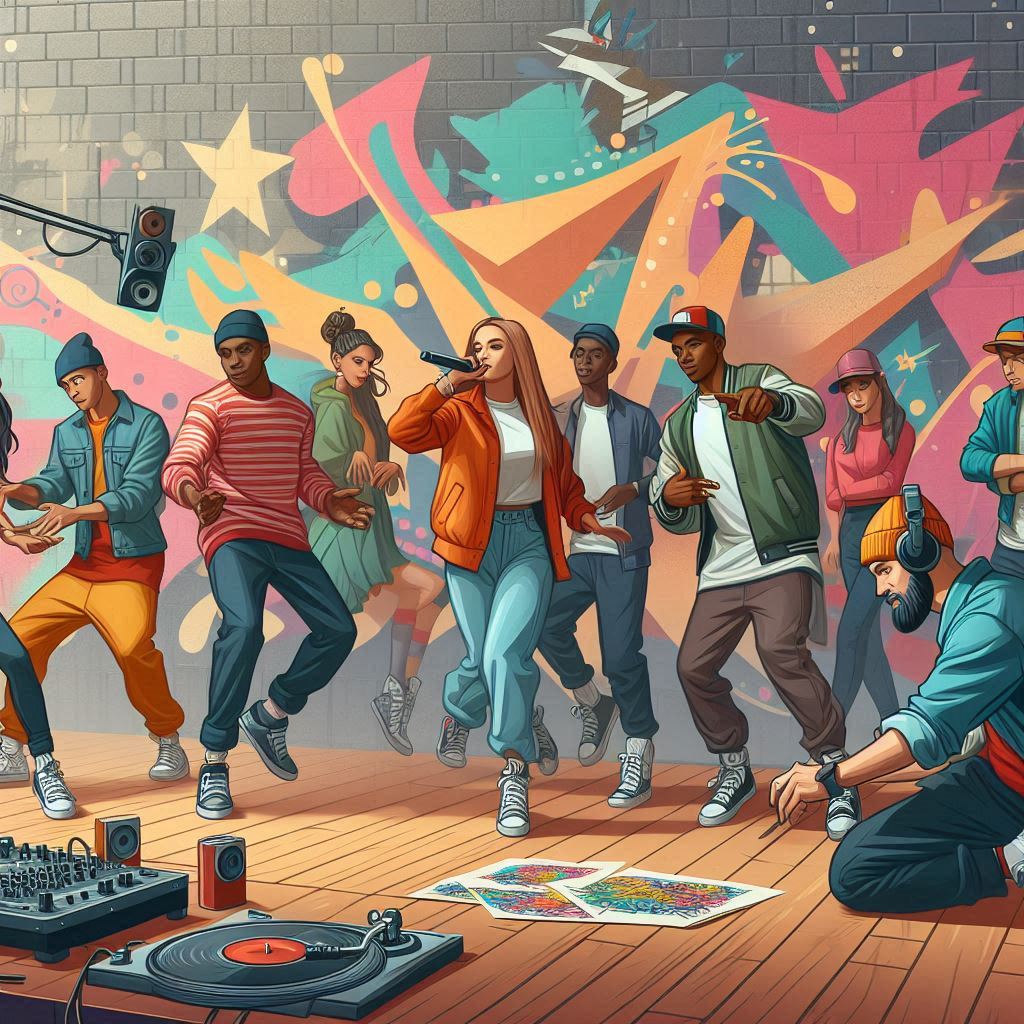Arts & Culture
The Evolution of Hip-Hop: A 51-Year Journey Through Music and Culture

This article explores the rich history of hip-hop, highlighting its key milestones, influential figures, and cultural impact.
The Birth of Hip-Hop in the 1970s and Its Evolution
Hip-hop was born on August 11, 1973, at a house party in the Bronx, New York. DJ Kool Herc, widely credited as the founding father of hip-hop, used two turntables to extend the instrumental breaks of songs, creating a new sound that energized the crowd.
This technique, known as “breakbeat DJing,” became the foundation of hip-hop music.
In its early days, hip-hop was more than just music; it was a form of expression for marginalized communities.
It encompassed four main elements: DJing, rapping (MCing), breakdancing, and graffiti art. These elements were a response to the social and economic challenges faced by African American and Latino youth in the inner cities.
Hip-hop provided a voice for the voiceless, a way to express frustration, hope, and resistance.
The Golden Age of Hip-Hop: 1980s
The 1980s marked the “Golden Age” of hip-hop, a period characterized by innovation, diversity, and the emergence of iconic artists.
During this time, hip-hop began to gain mainstream recognition. Groups like Run-D.M.C., Public Enemy, and N.W.A. revolutionized the genre with their powerful lyrics and unique styles.
Run-D.M.C. is often credited with bringing hip-hop to the masses. Their collaboration with Aerosmith on “Walk This Way” broke down barriers between rock and rap, introducing hip-hop to a wider audience.
Public Enemy, on the other hand, used their music to address social and political issues, making hip-hop a platform for activism.
N.W.A.’s raw and unapologetic portrayal of life in Compton brought gangsta rap to the forefront, influencing countless artists and sparking controversy.
The 1980s also saw the rise of breakdancing and graffiti as integral parts of hip-hop culture. Breakdancers, or “B-boys” and “B-girls,” showcased their skills in battles, while graffiti artists used the streets as their canvas, turning urban spaces into vibrant displays of creativity.
The 1990s: The Era of Commercial Success and Regional Diversity
The 1990s were a transformative period for hip-hop, as the genre achieved unprecedented commercial success.
The decade saw the rise of hip-hop moguls like Sean “Diddy” Combs, Dr. Dre, and Jay-Z, who turned hip-hop into a multi-billion-dollar industry.
The East Coast-West Coast rivalry defined much of the 1990s, with artists like The Notorious B.I.G. and Tupac Shakur at the forefront.
This rivalry, fueled by media hype and personal animosities, tragically culminated in the deaths of both Biggie and Tupac, leaving a lasting impact on the hip-hop community.
Despite the tension, the 1990s were also a period of regional diversity in hip-hop. The East Coast, particularly New York, continued to produce influential artists like Nas and Wu-Tang Clan.
Meanwhile, the West Coast, led by Dr. Dre and Snoop Dogg, dominated the charts with G-funk, a subgenre characterized by its smooth, melodic beats and laid-back vibe.
The South also began to emerge as a significant force in hip-hop during this decade. Artists like OutKast and Scarface introduced the world to Southern hip-hop, known for its distinct sound and storytelling.
The 1990s laid the groundwork for the genre’s future, setting the stage for its global dominance.
The 2000s: The Rise of Digital Hip-Hop and Global Influence
The 2000s saw hip-hop’s influence expand beyond the United States, as the genre became a global phenomenon.
The advent of the internet and digital platforms like Napster and YouTube changed the way music was distributed and consumed, allowing hip-hop to reach a wider audience.
Artists like Eminem, 50 Cent, and Kanye West dominated the charts, each bringing a unique style to the genre.
Eminem’s controversial lyrics and unparalleled lyrical prowess made him one of the most successful and polarizing figures in hip-hop.
50 Cent’s gritty tales of survival resonated with fans, while Kanye West’s innovative production and introspective lyrics pushed the boundaries of hip-hop.
The 2000s also saw the rise of hip-hop as a global cultural force. Artists from around the world began to incorporate hip-hop elements into their music, creating a fusion of styles that reflected their own cultures.
This period marked the beginning of hip-hop’s evolution into a truly global genre, influencing fashion, language, and attitudes worldwide.
The 2010s to Present: Continued Evolution of Hip-Hop
In the 2010s, hip-hop solidified its position as the dominant genre in popular music. Artists like Drake, Kendrick Lamar, and Nicki Minaj became household names, each contributing to the genre’s continued evolution.
Drake’s ability to blend hip-hop with R&B and pop made him one of the most successful artists of the decade.
Kendrick Lamar’s thought-provoking lyrics and concept albums earned him critical acclaim and solidified his status as one of the most important voices in hip-hop.
Nicki Minaj, with her versatile flow and larger-than-life persona, broke barriers for women in hip-hop, paving the way for a new generation of female rappers.
The rise of social media and streaming platforms further transformed hip-hop, allowing independent artists to gain exposure without the backing of major labels.
This democratization of music has led to a more diverse and inclusive hip-hop landscape, with artists from different backgrounds and regions contributing to the genre’s growth.
The Enduring Legacy of Hip-Hop
As hip-hop celebrates its 51st anniversary, it continues to evolve, reflecting the changing social, political, and cultural landscape.
From its humble beginnings in the Bronx to its current status as a global powerhouse, hip-hop has left an indelible mark on music and culture.
The genre’s ability to adapt and innovate has ensured its relevance across generations, and its influence shows no signs of waning.
As we look to the future, hip-hop will undoubtedly continue to shape and be shaped by the world around it, remaining a powerful force in the cultural conversation.
Kenya Insights allows guest blogging, if you want to be published on Kenya’s most authoritative and accurate blog, have an expose, news TIPS, story angles, human interest stories, drop us an email on [email protected] or via Telegram
-

 Business1 week ago
Business1 week ago‘They’re Criminals,’ Popular Radio Presenter Rapcha The Sayantist Accuses Electric Bike Firm Spiro of Fraudulent Practices
-

 Business6 days ago
Business6 days agoIt’s a Carbon Trading Firm: What Kenyans Need to Know About Spiro’s Business Model Amid Damning Allegations of Predatory Lending
-

 Business5 days ago
Business5 days agoManager Flees Safaricom-Linked Sacco As Fears Of Investors Losing Savings Becomes Imminent
-

 News2 weeks ago
News2 weeks agoTemporary Reprieve As Mohamed Jaffer Wins Mombasa Land Compensation Despite Losing LPG Monopoly and Bitter Fallout With Johos
-

 Investigations1 week ago
Investigations1 week agoDisgraced Kuscco Boss Arnold Munene Moves To Gag Media After Expose Linking Him To Alleged Sh1.7 Billion Fraud
-

 News6 days ago
News6 days agoWoman Accused in High Defamation Blames AI As Case Exposes How Mombasa Billionaire Mohamed Jaffer Allegedly Sponsored Smear Campaign Linking Joho’s Family To Drug Trafficking
-

 Investigations2 weeks ago
Investigations2 weeks agoFrom Daily Bribes to Billions Frozen: The Jambopay Empire Crumbles as CEO Danson Muchemi’s Scandal-Plagued Past Catches Up
-

 Africa1 week ago
Africa1 week agoDisgraced Oil Trader Idris Taha Sneaks Into Juba as Empire Crumbles











